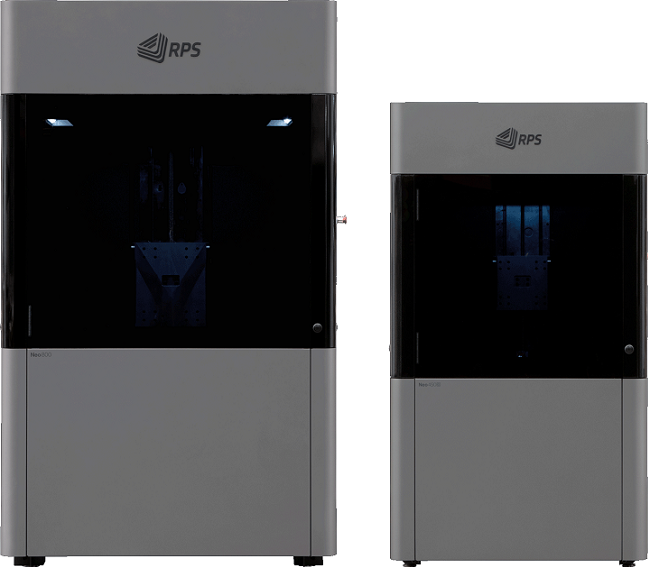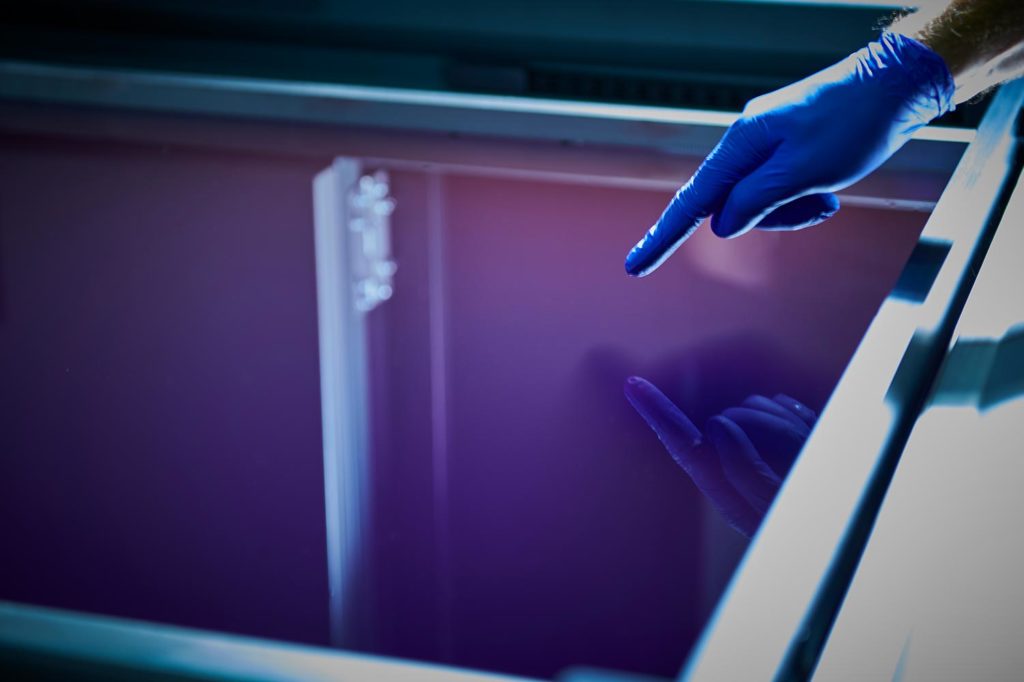Not long after completing its acquisition of Origin last month, Stratasys (NASDAQ: SSYS) announced that it has acquired U.K.-based industrial stereolithography (SLA) printer and solutions provider RP Support Ltd. (RPS). In doing so, Stratasys will be able to expand its range of polymer 3D printing solutions with the addition of RPS’ Neo 3D printers. And, now, Stratasys has become a substantial player in the SLA market.
RPS’s professional Neo SLA 3D printers, which just came to the U.S. this spring, are open resin systems that rely on laser technology to enable prints with detailed features and low variability. In addition to good build accuracy, Neo 3D printers feature a small footprint but have the ability to print large-format parts up to 800 x 800 x 600 mm in size. The company’s materials offer many properties, including durability, flexibility, chemical resistance, optical clarity, and heat tolerance.
Thanks to the company’s Titanium control software, Neo systems are also Industry 4.0-ready. The software includes support remote diagnostics, mid-build customization of parameters, network connectivity, and a camera, and users will receive emailed progress reports on their prints sent automatically from the printer itself. Now that Stratasys has acquired RPS, future versions of the Neo 3D printers will also be integrated with Stratasys’s GrabCAD Print workflow software as well.
“We developed the Neo line to raise the industry standard for the next generation of large-frame industrial stereolithography 3D printers. I’m looking forward to continuing to develop this best-in-class technology with the Stratasys team as we bring our products to a broadened global audience,” said David Storey, the RPS Director.
One happy RPS customer is British Formula 1 racing team Williams Racing, which acquired several Neo800 3D printers.
Williams Racing Operations Director James Colgate said, “The team’s RPS Neo800 machines ran unmanned over the Christmas break, delivering a huge volume of high-quality parts to our aero test program, a truly astounding achievement. I wanted to let you know how impressed we have been with our new Neo 3D printers.”
By adding RPS’ complementary SLA technology to its own line, Stratasys will be able to cover the entire product life cycle, all the way from concept modeling to 3D printed end parts.
“As businesses accelerate their adoption of additive manufacturing, our goal is providing our global customers with the world’s best and most complete polymer 3D printing portfolio. We believe the Neo products are superior relative to other solutions currently available in the market due to an open choice in resins, low service requirements, and reliable and accurate builds with simple day-to-day operation,” explained Stratasys CEO Yoav Zeif. “With access to our strong global channels and our innovative GrabCAD software, we will bring RPS’ innovative products to many more manufacturing organizations.”
Stratasys plans to make the RPS line of industrial Neo SLA 3D printers available to the global market, but not before using its own infrastructure to its advantage by helping to expand applications for the systems.
Joris Peels, 3DPrint.com Executive Editor and Vice President of Consulting for SmarTech Analysis, offered his take on this latest Stratasys move.
“RPS has a good reputation for making excellent SLA systems capable of manufacturing high quality parts,” Peels said. “With a strong pedigree in Formula1 and with other demanding customers, the firm has a wealth of stereolithography knowledge and experience that will be a real force multiplier for Stratasys’s SLA efforts. Along with the Origin acquisition, this underscores that Stratasys is serious about vat polymerization. I’m now thinking of LSS Europe, which is like RPS for sintering, and wondering if their deep technological expertise in powder bed fusion won’t make them Stratasys’s next target.”
Interestingly, Stratasys stock dropped -5.62 points (-11.56%) after the announcement, currently trading at $43.13 per share as of this writing. This is in contrast to the fact that the stock steadily grew to $54.37 per share after the Origin acquisition, its highest point since the 2014 3D printing stock bubble. Why it would fall now is unclear. Stratasys believes that, by the end of 2021, the acquisition of RPS will be starting to help grow its revenue and non-GAAP per-share earnings.
(Source: Stratasys/Images: RPS)
Subscribe to Our Email Newsletter
Stay up-to-date on all the latest news from the 3D printing industry and receive information and offers from third party vendors.
You May Also Like
Gorilla Sports GE’s First 3D Printed Titanium Cast
How do you help a gorilla with a broken arm? Sounds like the start of a bad joke a zookeeper might tell, but it’s an actual dilemma recently faced by...
Nylon 3D Printed Parts Made More Functional with Coatings & Colors
Parts 3D printed from polyamide (PA, Nylon) 12 using powder bed fusion (PBF) are a mainstay in the additive manufacturing (AM) industry. While post-finishing processes have improved the porosity of...
$25M to Back Sintavia’s Largest Expansion of Metal 3D Printing Capacity Since 2019
Sintavia, the digital manufacturing company specializing in mission-critical parts for strategic sectors, announced a $25 million investment to increase its production capacity, the largest expansion to its operations since 2019....
Velo3D Initiates Public Offering in a Bid to Strengthen Financial Foundations and Drive Future Growth
Velo3D (NYSE: VLD) has been among a number of publicly traded 3D printing firms that have attempted to weather the current macroeconomic climate. After posting a challenging financial report for 2023,...
































